20 Things To Know Before Visiting America (USA) in 2022
The United States of America (USA) is one of the biggest countries in the world. From sea to sea, top of the mountains to the ocean shores, this country encompasses a large portion of the North American continent.
The country has a rich history that dates back well over 200 years, and to this day the USA leads the world into the world of tomorrow. They offer some of the highest budget and high-quality entertainment that gets spread around the globe. A country of this scale is a hot spot for international tourists.
There are numerous cities to visit, landmarks to see, and many places to explore across the beautiful American landscape. This article will look at 15 aspects of the USA ranging from key and useful things to know, to additional amusing and interesting facts to keep in mind. Traveling to the USA is highly recommended for anyone around the world at least once in their life.
Here we go: Things to know before going to America
Do you still need to present a PCR Covid-19 to enter the United States?
No, as of June 22, 2022, the U.S. dropped the testing entry requirement for all visitors. Proof of vaccination is still required. (Source: travel.state.gov)
Everything is Huge (Food, cars, roads, rooms, etc.)


This is one aspect that separates the USA apart from the rest of the world. Everything from the food portions to the size of rooms and buildings is often bigger than their counterparts across the ocean.
This means a traveler can expect to get more for their money wherever they go. The power to make everything big and bold is the pride of modern-day American.
Travelers can look forward to experiencing this different approach to the classic food they know and love from back home.
Lack of Public Transportation – You’ll Probably Need A Car
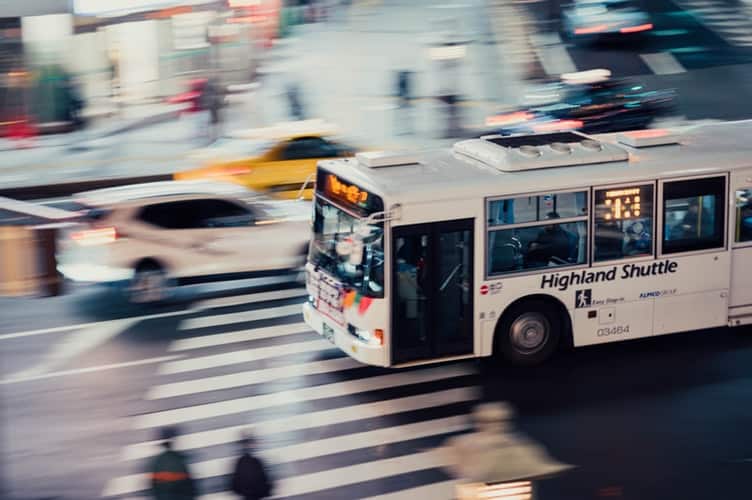
The USA might be one of the most technologically advanced countries in the world, but widespread public transportation is hard to find in this vast nation. Americans love the car as a means to see the wide-open nature and get from one location to the other independently.
However, this system can be troubling for those looking to visit the country. Travelers should expect to be traveling between the major cities on airplanes or buses. Train networks are mostly confined to within the bounds of the major cities.
You Must Be At Least 25 Years To Rent A Car in the US?
Most of the rental companies will require that! Some of them will let you rent a car but you will have to pay an extra fee! This surcharge fee will cost you between $25 – $30 depending on the location and company.
Check out this post for more details about renting a car under 25 and fees.
Metric System Is Very Confusing
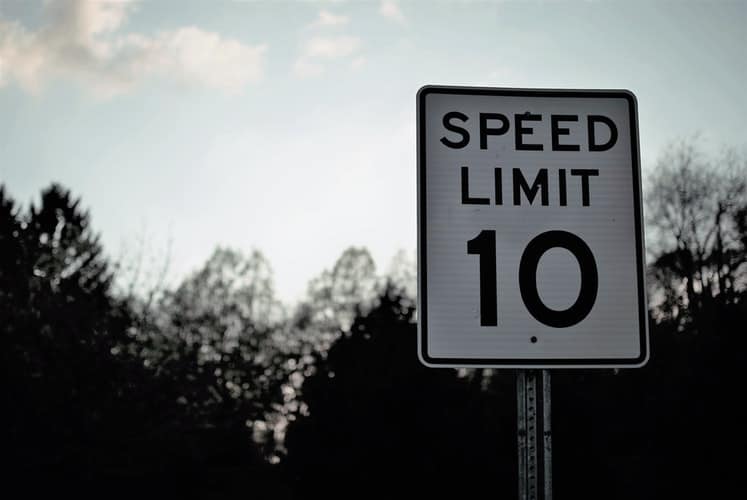
Another surprising way the USA differs from the rest of the world is through the use of the metric system in measurements. While nearly all developed countries use a system with centimeters and milliliters to measure out substances, the USA is still using their timeless inches and feet units for the same purpose.
This conversion divide can be problematic for travelers who might not understand the exact value of the numbers stated. Travelers should keep a conversation table on hand to reference if there is any chance they need to precise amounts.
The Different Climates
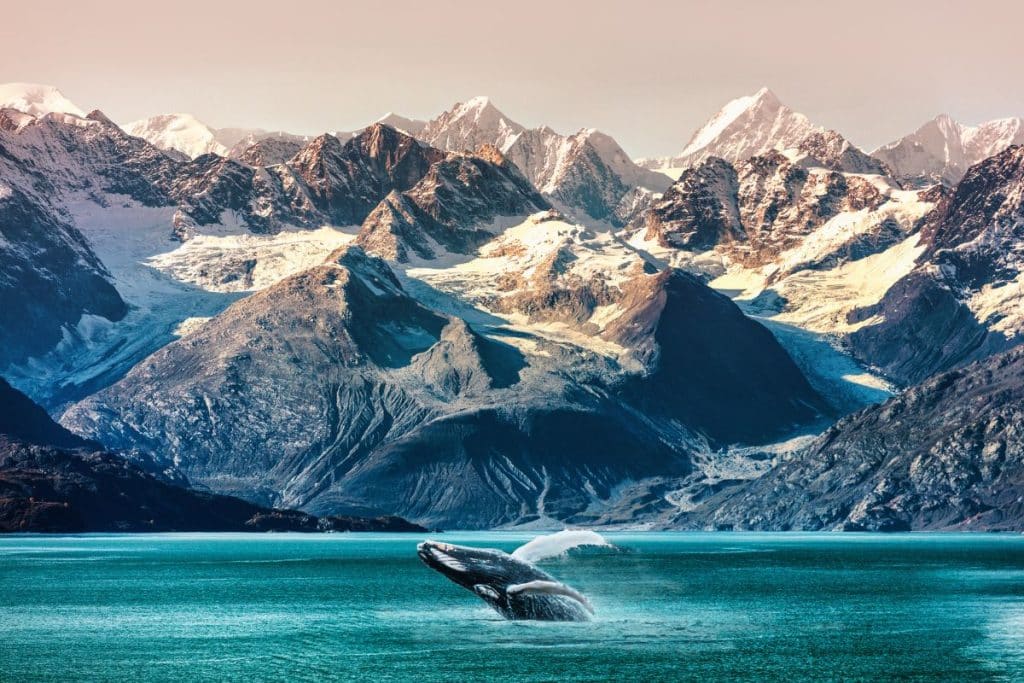
The USA is a country that experiences all 4 seasons and a wide variety of climates all over the country. The north tends to be on the cooler side, while the deep south remains warm.
At the same time, the east coast experiences hot and muggy summers while the west coast has fairly consistent weather year-round. The southwest is a desert region where plants and trees are hard to find. All the various climates mean a traveler should bring along appropriate clothes to wear based on the region and time of year the individual wishes to visit.
Is USA safe for tourists? Not Always
As part of the developed world, the USA is naturally one of the safest places to visit. However, there are certainly some dark areas that the authorities would recommend avoiding. Start by always traveling in pairs, and if you must be alone then travel in a well-lit area.
The big cities, in particular, have dark underbellies that should be avoided at all costs. The USA is a type of country where simple vigilance will keep you safe throughout your trip. In the event of an issue, don’t be afraid to rely on the police. They have the best interest of the community in mind.
Does UBER or LYFT work all over the US?
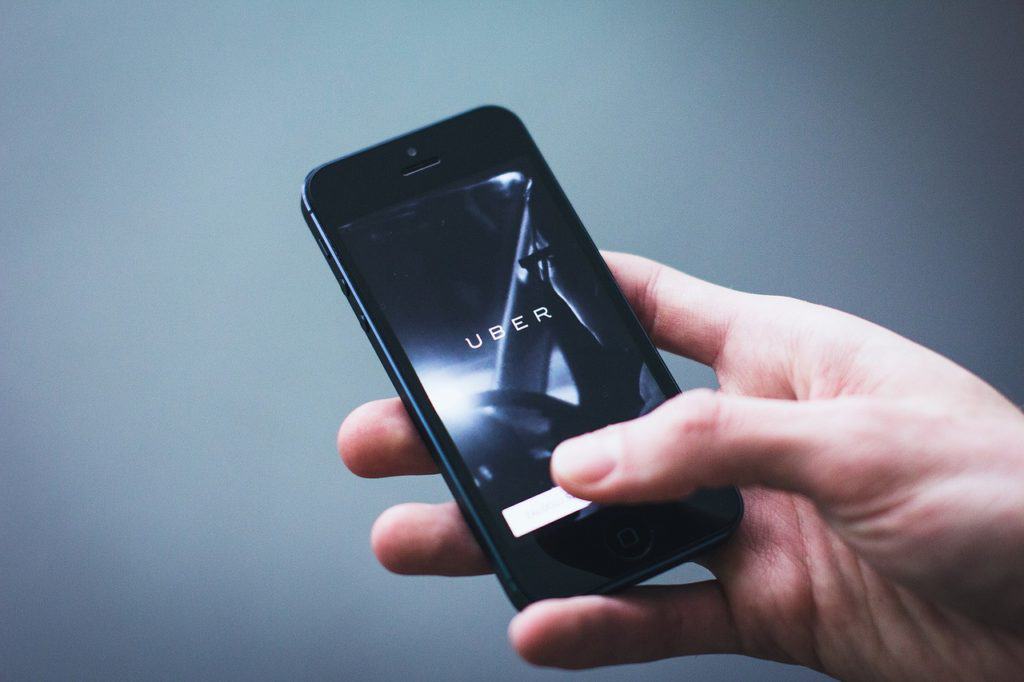
Yes UBER and LYFT are available in all the states. Since regular TAXIs are super expensive in US, we highly recommend using the apps.
Uber is slightly more expensive than LYFT but they usually have nicer vehicles. Lyft is more affordable and the drivers are more chatty than UBER drivers.
SALES TAXES are usually not included in the price
While doing shopping of electronics, clothes or other goods you might get a bit shocked when it comes to paying because of the higher final price.
Most of the states handle their TAX individually and the way how they display the TAX or the actual amount of TAX can differ. KEEP IT IN MIGHT TO AVOID CONFUSIONS!
Washington State and D.C. are Two Different Places

As with any language, there is bound to be some communication issues that foreigners encounter. This is often from similar-sounding words being mixed up when used in a similar context. However, this problem extends into the naming of place because Washington is such a popular name in the USA.
Foreigners are frequently confused by the west coast state of Washington and the capital of the county in Washington D.C. on the east coast. The easiest way to avoid this confusion is never forgetting that the capital is designed to operate independently of any states in the union.
Tipping is always expected!
Yes, the tipping policy in the US is quite clear! Get used it before you get in trouble
Well, you won’t get in trouble but you will confuse the waiter a lot and you might get bad looks from them, especially when they try to work hard and offer great service.
Tips should usually be between 15% – 25% of the total price of the bill. Here is a detailed guide on tipping it United States.
You Might be “Investigated” at the Airport
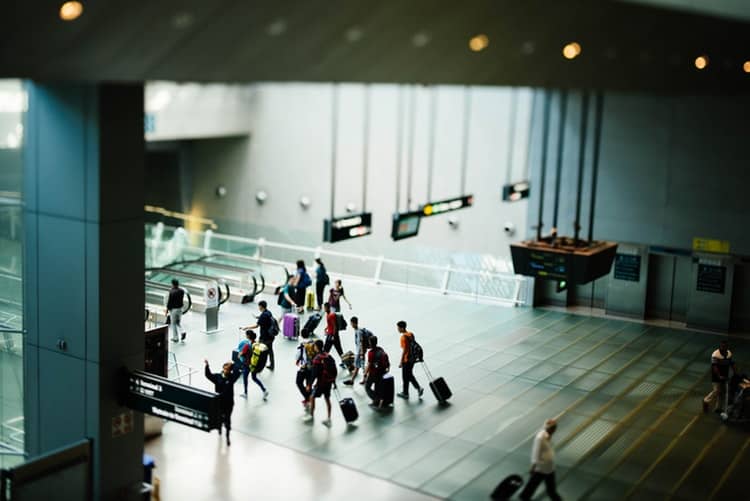
Since the fateful events of 9/11, airport security around the globe has become increasingly tighter. A traveler who is going to some of the busiest airports should expect long wait times and a complete check of what they are bringing to the airport and on-board the plane.
It’s recommended that travelers arrive 2-3 hours before they take off to allow sufficient time to clear security and reach the plane. This is especially important for the USA where many of the world’s busiest airport operates.
You have to show your ID very often (GET USED TO IT)
It’s important to keep your PASSPORT with you most of the time. DRIVING LICENSE or ID from your country won’t usually be enough.
Even if you’re 40 years old and they still ask you for ID when ordering alcohol or entering a club.
It might come annoying and slightly insulting if you are from a different country but just get used to it (same as locals).
English is the Spoken Language
The USA is a society full of individuals from all walks of life and backgrounds, but a traveler should anticipate seeing mostly English on signs and in-store shops.
English is the universal language of the world, and as such, this is usually not a hindrance for foreigners. Though it would not hurt for travelers to get a book of phrases or memorize key lines to help them get around. Most Americans are willing to lend a hand if anyone is looking for a specific location or need directions.
Obtaining a Visa Might Be Difficult
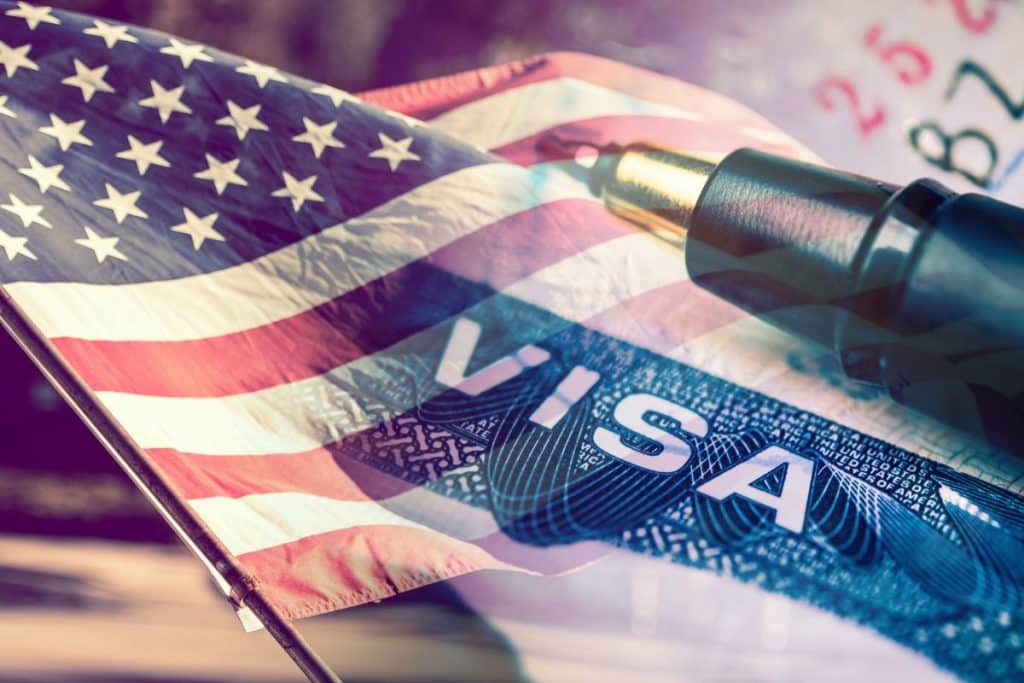
Some of the most important necessities for traveling abroad is obtaining a passport and a visa. This is a method by which a country has to give permission for a foreign individual to come to visit. The USA demands that almost all non-citizens first obtain a visa before entering the country.
In order to obtain one, it only requires the traveler to submit an application and wait for it to clear. This is usually a seamless process that results in no issues arising. However, individuals from specific countries should expect their application to take longer due to external circumstances in global affairs.
You will need a lot of money! USA is expensive
This might seem like common sense, but bringing money is absolutely essential to making sure your trip to the USA goes smoothly. The major cities are located far apart and their numerous stores along the way for travelers to see.
An individual should expect to spend large amounts of travel money to get around, especially if they plan to visit more than one city. A short bus ride or a walk is rarely good enough to get where you want to go.

Check some cheap USA motel chains for accommodation!
Make sure you know where you going! Have a map on your road trip
A map is an essential part of traveling anywhere across the USA. Streets are grouped by blocks and sometimes buildings house multiple businesses. It is highly recommended for travelers to plan out their day in advance.
The map is also handy in case you get lost. It can be easy to get swept away in a crowd of people around tourist hot spots. Make sure that you and any travel partner know the plan when you can’t find each other. The sheer scale of the country makes needing a map to occur more often than you might think.
Driving on Left Side
While much of the world drives on the left side of the road, it is important to keep in mind that the road rules of the United States are fundamentally different.
Americans not only drive on the right side of the road, but the driver’s seat is on the left side of the car. This puts the country’s transportation framework at odds with the rest of the world. If you are planning to drive around the USA, then be sure to fully read up on road signs and travel tips. Even if the basics are flipped, it might not feel the same as your home country.
Sporting Events Are Must
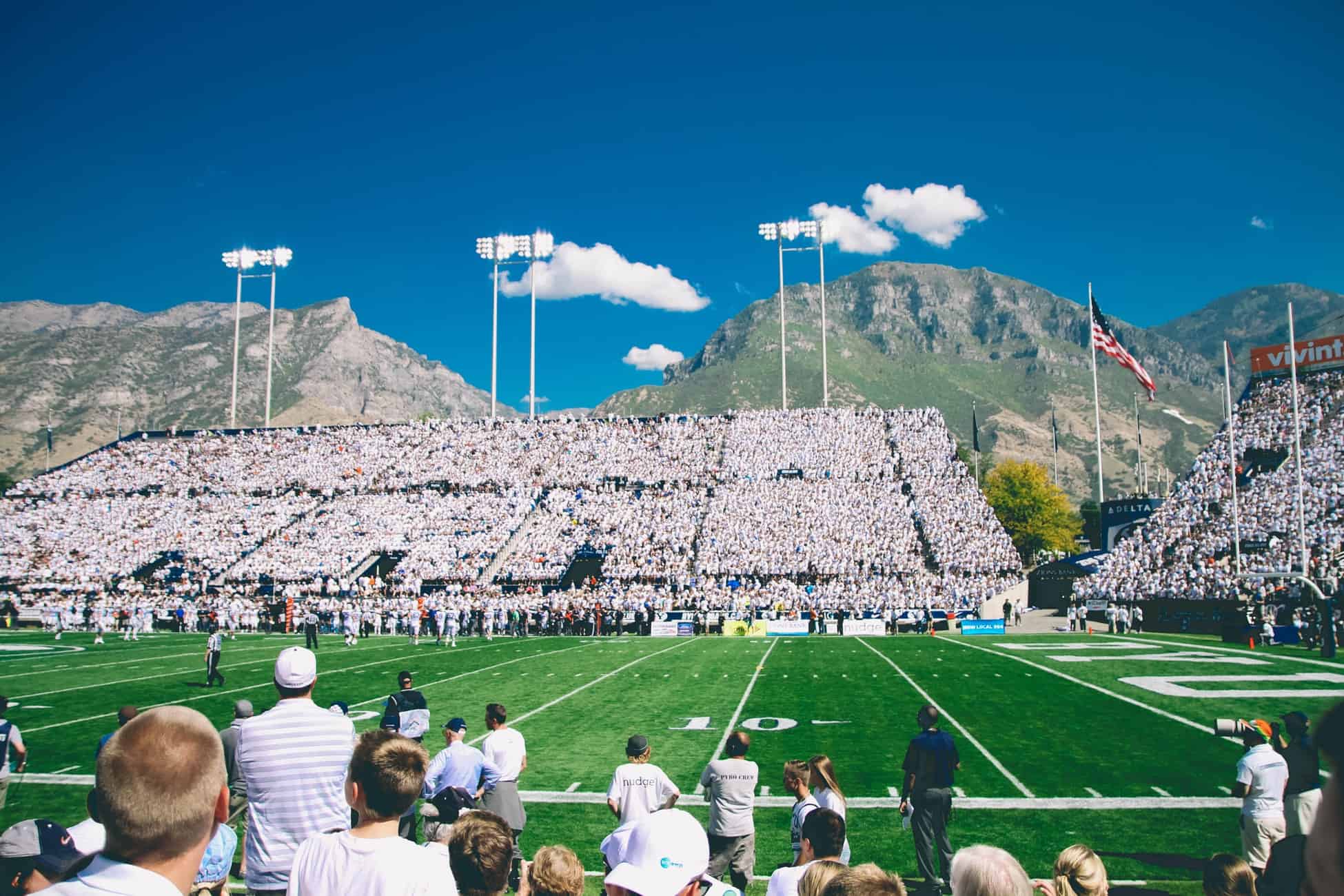
One of the biggest events in the USA is when sports team go up again each other. There are national leagues for baseball, basketball, and football at both the professional and college level. No matter the time of year, there is always one of the leagues in the active part of their season.
These events are some of the most-watched television of the year. A traveler should definitely plan an evening out at a sporting event. It does not get much more American than rooting for your favorite team at the top of your lungs.
Nature Exploration – Never-Ending Land
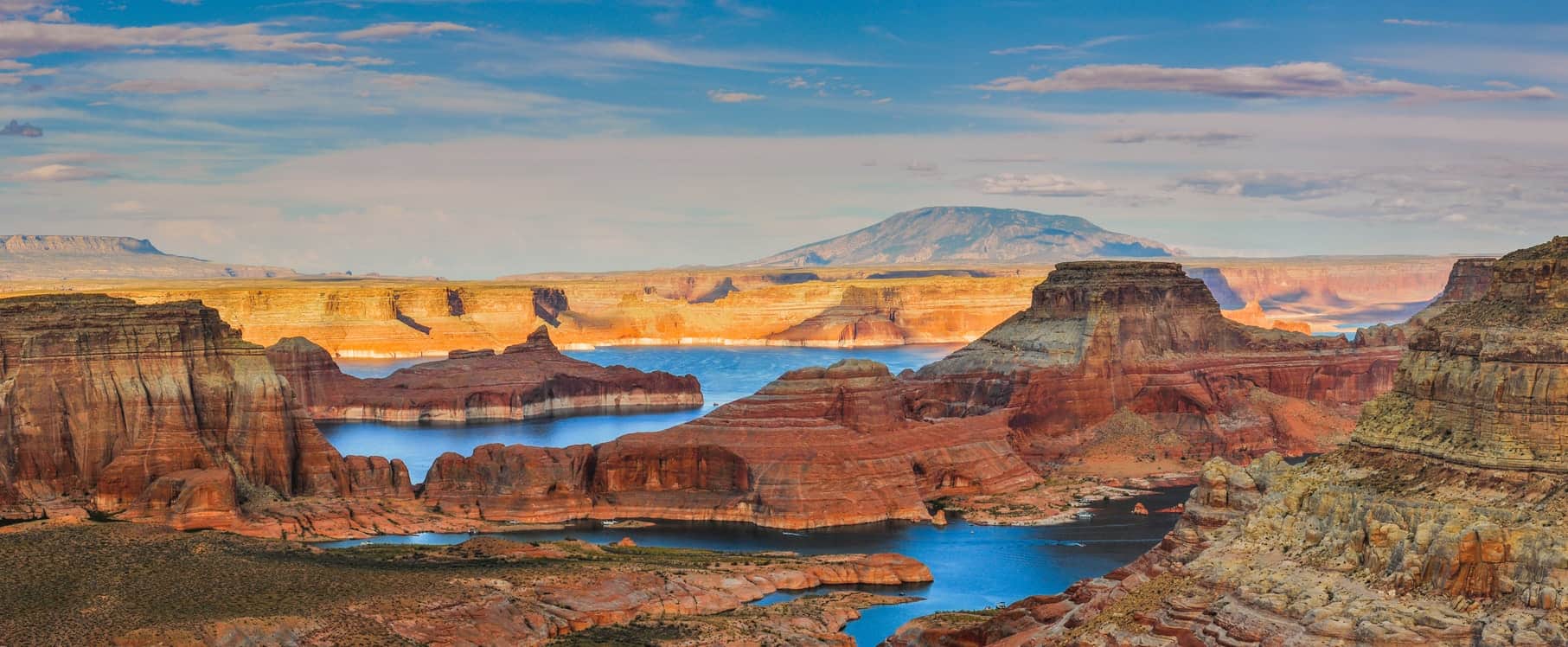
Between the mountains and the oceans, the USA has a large variety of nature to explore. A traveler can experience the populous beaches on one side of the country or make a climb to the top of the nation in the Rocky Mountains.
The Midwest offers open plains with a majestic view for as far as the eye can see. Then lastly, the Grand Canyon in the southwest is one of the most unique features on the planet. There is an endless amount of places to go and visit around the country.
Americans are Loud
The notion that Americans are loud is one of the most common stereotypes a foreigner has likely heard in their lifetime. While it’s true that Americans tend to make sure they can be heard, this is a reflection of the abundance of entertainment that the country offers.
From the movies to the parks, singing, and performances, the USA has a wealth of ways for people to express themselves actively and passively in all kinds of media. American culture is all about being the best you can be for yourself.
— check out this great video —
There are countless countries in the world, but few as richly diverse and large as the USA. This is a country that is very welcoming to foreigners and loves to show off everything it has to offer. From the food, the entertainment, nature views, and the everyday people, the USA is a country that is proud of what it has accomplished for itself and the world.
Visitors can see some of the most prestigious buildings in the world while getting a glimpse into history through all the historical sites spread around the country. The mix of cultures and ethics brings out a blend of life that one will never find in other parts of the world. Visiting the USA is an experience unlike any other. An individual from anywhere who looking for a trip abroad should consider the USA. You never know what kind of experience the trip will have in store.
You will need a CREDIT CARD (not debit) to rent a car

In most cases, U.S. car rentals will accept debit cards to verify credit at the time of rental. Renters must also meet some minimum criteria to be able to rent a car.
For instance, they should be older than 25. However, younger drivers may pay an additional surcharge and must be at least 21 years old in most states and provinces.
You must have a valid driver’s license issued in the U.S., Canada or any other country that meets the car rental requirements.
You may also be required to provide a round-trip plane ticket or travel itinerary with returning date and your passport.
10 Things Solo Travelers Should Know Before Going To South America

Heather Markel
It’s imperative to feel comfortable and safe while traveling. Medjet provides premier air medical transport, travel security, and crisis response memberships, providing peace of mind for an affordable price.
Travel With Confidence Find Out More
I took my first trip to South America in 2019. I had freed myself from the corporate grind and finally felt like I had enough time to begin exploring this vast continent. I’ll be honest, I had some fears going into the journey.
As an American who is part of the STEP program, I’m used to ongoing warnings in that region about kidnapping, crime, etc. I started my journey in Cali, Colombia, to celebrate a friend’s birthday party. I continued onward, solo, to six more countries. My preconceived notions were challenged and shifted every day. Here are my thoughts on what you should know as a solo traveler going to South America.
1. Local Buses Are Safe And A Great Way To Travel, But You Need A Couple Of Tips
If you’re alone and on a budget, take the buses. I was surprised at how safe I felt journeying all over Argentina, around Chile, Peru, and Brazil. Chile was the only place I was warned to look out for people dressing like a bus employee in a ploy to steal your luggage. I met a lovely young English couple in Santiago that fell prey to the scam and lost all their bags, including the one with their passports.
As long as you know a few ground rules, you’ll have an excellent experience. Luggage goes in the bus, not on top. Don’t accept offers from anyone wanting to put your bags on top, that’s how the aforementioned couple lost their belongings. Line up by the luggage hold when your bus arrives and make sure to get a ticket for your bag. Tip the luggage attendant at least a dollar, U.S. That and your ticket will guarantee your bags will be there when you arrive at your destination.
Some countries, like Peru and Bolivia, have a “Hop” bus. I highly recommend using these services when you can. You might want to check out my review of the best ways to use Peru Hop. What I loved most about this was it’s a transportation method and tour guide all in one. You’ll meet lots of fun people as you go, and perhaps most important, the drivers are safe.

Heather Markel
2. Pay Attention To Dangerous Areas, And Use Your Intuition
Most countries in South America have a version of slums, like the favela, in Brazil. Ask whether it’s safe to be out at night, alone, when you arrive at your accommodation. Whatever they advise you, listen. Be open to the idea that places may not be as dangerous as you read. I wandered around the beaches in Rio de Janeiro in the early evening and felt perfectly safe. Intuition, especially as a solo traveler, is your best and strongest ally. Always listen to it, even if it makes no sense at all.
3. Learn Some Spanish, But Be Ready For Dialects
There are many places in South America where you need to speak Spanish. If you want to get to some of the remoter parts of any of the countries, you’ll soon find there are parts where no English is spoken. I heard about the “gringo tax,” but I rarely encountered it. Either I didn’t notice, or it’s because I made an effort to speak Spanish. Only once, in Buenos Aires with a friend, who’s from there, did we get charged a “table fee” that we both found ridiculous.
I do recommend basic Spanish if you’ve never studied it. However, even if you consider yourself fluent or a good Spanish speaker, the dialects change from country to country, and sometimes even within larger countries like Argentina. As a solo traveler, you’ll be more comfortable traveling with some Spanish.
4. It’s A Lot Colder Than You Might Expect
Despite the advice I got in advance, I wasn’t prepared for how cold some South American countries are. It’s easy to forget that their seasons are flipped with the U.S. Understandably, places like Ushuaia are cold mid-year. I was surprised by how cold Chile is all year round, especially at night. I didn’t expect Urugay’s winter to be so cold, nor did I know that in winter, Buenos Aires can be 2 degrees Celsius. You’ll be grateful that this area of the world makes some great sweaters!

Heather Markel
5. Make Room In Your Suitcase
South America has stunning scenery, and you’re going to find a lot of souvenirs you want. First, those sweaters I mentioned? I don’t think it’s possible to leave this region of the world without at least two. If you go to Peru, you’re getting a poncho, even if you didn’t plan to. If you become a fan of yerba mate in Argentina or Uruguay, you’ll want the cups, the metal straws, and the yerba. It could become an addiction. I’m in the Facebook groups about it, so I know I’m not alone!

Heather Markel
6. Respect Your Altitude Sickness Symptoms
Don’t take this lightly. I brought Western medicine with me, but I hate taking medicine, so I used in-country herbal remedies everywhere I went. From coca leaves to herbal pills and lozenges, I tried it all. The difference is, if you use the prescriptions, you’ll more likely suffer the side effects than the altitude sickness. If you use the herbal path, it will take a little longer to kick in. That’s where time comes into play. Ideally, give yourself 2 to 3 days to adjust to the altitude in places like Peru, Bolivia, etc. You may suffer bad headaches and shortness of breath.
If you’re a solo traveler, altitude sickness could impact your wits and your ability to function at 100 percent. Make sure to respect your symptoms. I learned that, unfortunately, altitude sickness resilience doesn’t build up over time. If you’re at a high altitude for a few days or a week, then go back down and come back up a few days later, the symptoms start all over.
7. If You’re A Female Solo Traveler, Abide By Local Customs
I will simply give you the advice that you should not go to dinner or drinks with a man, alone, unless you’re physically interested in him. Unlike other countries, there’s often a base assumption that if you go out alone with a man, you want to have sex with him. I suggest, whether you like that or not, you abide by this rule. If you like a man, go out with him. If you aren’t sexually interested in a man, don’t accept his invitation.

Heather Markel
8. Pay Attention To Dog Culture
I realize this may sound strange, but dogs are a big part of travel in South America. In much of Argentina, especially smaller towns, dogs are like people. They don’t wear collars, they wander the streets as if on their way to important meetings, and if you pet them, they’re yours. They will literally follow you around, possibly for hours, and be your literal best friend.
Of course, they would love a treat, but even if you don’t feed them, show a dog affection in Argentina, and you’re likely to have a new best friend who won’t want to leave your side. (Yes, they usually do have owners that love them, too.) In Chile, dogs are so important that a law was passed punishing people who abuse them.
9. Take As Many Free Walking Tours As Possible
These are now all over the world. If you aren’t familiar with them; the tour and guide are free, with the hope that you’ll tip them for their great service. I loved all the guides I had throughout South America. The groups are usually small, and it’s a nice way to meet people as you travel. As a solo traveler, it’s always nice to have reliable and inexpensive ways to meet other travelers.
10. Be Ready To Overhaul All Your Prejudgments
Some South American countries have gotten a bad rap. Colombia is an example of a country still trying to overcome its guerilla warfare reputation. I’m not saying that safety in South America is the same as what you’re accustomed to. However, South America is also not rife with militants and drug dealers everywhere you go. I’m sure they do exist, but the perceptions are based on something other than meeting wonderful locals and connecting, which is what you’ll be doing when you go there.
South America is one of the most fascinating continents I have ever been to. The colors, the people, the llamas, the views, the food — there’s so much to tantalize the senses. I miss it and can’t wait to return. As so often happens when you gain an emotional attachment to a place, it follows you on your travels.
The other day, here in New Zealand, I met a woman from Ecuador. It’s getting cold as we roll into winter, and she was selling ponchos and jackets from her country. I don’t have winter gear with me so I tried on one of her jackets. Because of my now excellent Spanish-speaking abilities, she gave me a huge discount. The experience warmed my heart and my body, just like my time in South America.
Related Reading:
Heather may have started the Great Resignation movement. In 2017, she quit her job to travel the world full time. Since then, she’s been to six continents and 33 countries (and counting) enjoying adventures such as seeing the Big 5 in Africa, watching the sun rise and set over the Moai on Easter Island, ziplining in Costa Rica, drinking malbec in Mendoza, and getting stuck in New Zealand during the pandemic.
Heather is a full-time travel coach who is passionate about helping professionals seeking more freedom and flexibility to ditch their desk and discover their destiny through full-time travel. She provides her clients with the path to the mindset, money, and mastery to make a full-time travel lifestyle possible. Since quitting, she’s become an international best-selling author and is about to do her first TEDx talk! Learn more about Heather’s travel adventures on her website, Heather Begins.
Your Definitive Guide to South America Visas: What Do You Need For Your Trip?

Perhaps the most daunting thing about travelling (except for finding good travel insurance), is understanding the entry requirements of each country. Visas can be tricky, with some nationalities requiring them in advance and others being able to get them at the border.
Visa requirements are prone to change which means what is true one minute may not be so the next. As such, it is always important to research what visas you need and make sure that you double-check this information a few days before you travel (just in case).
We here at South America Backpacker know how confusing this can all be and in an attempt to make it easier for you, we’ve compiled this South America visa guide!
Disclaimer: All of the above information is the result of hours of research and internet trawling for the most up to date information out there. Please bear in mind that whilst we always try to keep our articles up to date, this is a mammoth task for a small team like ours! If you do find anything that needs updating, please let us know so that we can continue to provide the most current and useful information.
However, please bear in mind that visa requirements are subject to change often. Always do your own research and contact the relevant embassy if you have any queries about the visa requirements. After all, there is nothing worse than arriving at a border only to be sent straight home again!
Visa Guide to South American Countries A-Z
Visa information for Argentina:
If you are travelling as a tourist and do not require a visa, you will usually be granted a 90 day stay on a multiple entry basis. This allows you to enter the country numerous times within the period granted. 90 days is the maximum that can be given.
The nationalities that don’t require a visa to enter Argentina include all South American countries, USA, UAE, UK, Canada, Australia, New Zealand and most western European countries.
For those of you who do require a visa to enter the country, these will be charged at $50USD each.
Contrary to what you may read online, as of August 2018, Australians, Americans and Canadians no longer need to pay a reciprocity fee.
Passports must be valid for the entirety of the stay granted in Argentina. For example, if you plan to stay for 30 days, the passport must have at least 30 days of validity left.
Onward travel required: Those flying to Argentina are legally required to have proof of onward travel.
Staying longer in Argentina?
Renewal of your visa: An extension to your visa can be given at the Dirección Nacional de Migraciones (Buenos Aires Immigration Office) however, you can only extend once for the current trip that you are on. Needless to say, you should go to extend your visa before it runs out.
The visa extension given will never be more than the length of the original stay granted. For example, if you enter Argentina and are granted a 90-day stay, the maximum you could extend for is another 90 days. For nationals not from Brazil, Paraguay and Uruguay, the cost to extend your visa is around $15USD.
Border Runs or ‘Visa Runs’: If you are from a nation that doesn’t require a visa, it is possible to travel to one of Argentina’s neighbouring countries and then re-enter to get a new entry pass into the country.
Limits on the number of border runs/visa extensions: According to the Consulate website, the number of times that a traveller can re-enter the country in this way cannot be determined in advance. It is solely based on whether the Dirección Nacional de Migraciones are satisfied that you are not hiding your immigration purpose.
Overstay penalties: The fee for overstaying your visa is AR$600 (around $15USD) which must be paid at the airport upon your departure. Police can demand identification at any point which could cause lots of problems if your visa is no longer valid!
Visa information for Bolivia:
Canada, Australia, New Zealand and most countries in South America and western Europe (including the UK) do not need a visa to enter Bolivia.
If you do not require a visa to enter Bolivia, you will be given a free 30-day entry stamp on arrival.
Visas are required for citizens of the UAE, China, Russia and the USA. There is no cost for the first three countries however, travellers from the USA will be required to pay $160USD for 90 days entry (valid for 10 years). Be aware that damaged or torn bills will not be accepted.
Although it is theoretically possible to get a visa on arrival, some airlines are reluctant to fly passengers who do not already have a visa if required. Therefore, we recommend getting them in advance.
To obtain a Bolivian tourist visa, you must:
- Fill in an application form
- Provide proof of flights or travel itinerary
- Provide a hotel reservation or invitation letter
- Hold a certificate of yellow fever vaccine
- Provide 2 passport photos
- Hold a passport with at least 6 months validity
- Show proof of funds if necessary
- Citizens from the USA also require a police certificate
- Cash for fee (if required)
If you are visiting Bolivia, you are required to have at least 6 months validity on your passport after your length of intended stay in the country. You should also ensure that you have at least one empty page in your passport for stamps before you travel.
Entry vaccinations required: Visitors to Bolivia could be refused entry if they do not hold a certificate of vaccination against yellow fever. This applies if you are flying from a country with risk of the disease.
Onward travel required: You could be asked to show proof of this at borders.
Staying longer in Bolivia?
Renewal of your visa: Renewing your tourist visa in Bolivia is thankfully, very simple. Simply head to the Immigration Office in a major city. You can renew for another 60 days, free of charge.
However, you will need to do this on two separate occasions, a maximum of three days before your current visa expires. Visa extensions are only granted for 30 days at a time and can only be extended to 90 days in total (per year). You will need your passport and immigration card plus photocopies of these and your Bolivian entry stamp.
Overstay penalties: You will be charged a set fee per day (20 bolivianos at time of writing) if you overstay your Bolivian visa. Bear in mind that travellers who overstay longer than a couple of weeks may attract the attention of immigration and could be banned from re-entering. It is also possible that Bolivian border officials may ask for a bribe if you have overstayed.
Bus company Bolivia Hop has lots of good and easy to understand information on its website regarding visa requirements and details.
Visa information for Brazil:

Nationals of all EU and South American countries, as well as New Zealand, are allowed to enter Brazil for up to 90 days, visa -free.
Citizens from USA*, Australia*, Canada* and China all require visas.
- The following countries can apply for an electronic visa before their visit.
For more information on whether your country needs a visa for Brazil, check out the UK consulate website.
Visa fees are generally based on reciprocity which means that costs are determined by what a Brazilian National would have to pay to enter the other country. At the time of writing, the fees are as follows:
These fees can be paid by debit card or postal order. You cannot pay for a visa on arrival at the airport.
To obtain a Brazilian tourist visa, you must:
- Book an appointment with the Consulate
- Complete the visa application form online
You must provide the following original documents when required:
- Valid passport (with at least two blank pages)
- One passport photo
- Copy of your return travel and itinerary (can be an e-ticket or a booking reservation from a travel agent)
- Proof of sufficient funds for your trip. You must provide one of the following:
- Bank statements and three months transactions
- International credit card statements and three months transactions
- Your most recent three payslips
The visitor visa (VIVIS) will allow you to stay for up to 90 days in the country. This is counted from the date you enter the country and allows for multiple entries.
Visitors to Brazil must have at least 6 months on their passport, starting from their date of entry.
Onward travel required: This is mandatory for travellers visiting Brazil, as is being able to show proof of sufficient funds for your trip. Bank statements can be used to show this. Generally, the accepted budget is $150USD per person each day of your trip.
Staying longer in Brazil?
Renewal of your visa: You can extend your Brazilian visa for up to the same period which was originally granted to you when you entered the country. You must request a visa extension whilst your current visa is still in date with the Federal Police.
Please note: Schengen Area member state passport holders, (except Liechtenstein, Iceland, Poland, Norway and Portugal) are only permitted to remain in Brazil for 90 days every 180 days. This means these citizens are not eligible for a visa extension.
Overstay penalties: The penalty for overstaying your Brazilian visa is a fine of 8 reais (around $2USD) a day. It is possible to pay this fine when you leave Brazil or when you return. You will not be allowed to re-enter the country until you have paid this fine.
If authorities catch you with an out of date visa, you will be given 7 days in which to leave the country, as well as receiving the standard overstay penalties and a six-month ban.
It is worth bearing in mind that overstay is one of the most common reasons to refuse a Brazilian e-visa in the future.
Visa information for Chile:
A visa is not required for citizens of the following countries, the UK and most other EU countries*, USA, Australia*, Canada, New Zealand and South American countries.
Upon entry, you will be granted 90 days entry into the country. You will also be given a ‘Tarjeta de Turismo’ (Tourist Card) which you must keep safe and present to immigration when you want to leave the country.
*Travellers from Greece are only permitted 60-day entry on arrival.
* Australians are required to pay a $117USD reciprocity fee.
Visas are required for Chinese and Indian citizens. Once approved, they will be granted 90 days entry.
The following documents are required for a tourist visa application:
- Valid passport
- Criminal background check issued by police
- Health certificates pertaining to infectious/contagious diseases
- A clear description of your financial situation (e.g. payslips or bank statements)
- Contact person in Chile (name and address)
- 3 passport photos
- Application letter to Consul detailing visit motivation and length of stay
- Applicant telephone number and proposed dates of travel
Travellers entering Chile are only required to have a valid passport for the duration of their stay.
Onward travel required: You may be asked for proof of onward travel.
Staying longer in Chile?
Renewal of your visa: It is possible to renew your tourist card for an additional 90 days at the Departamento de Extranjería. To do this you will require copies of your passport and tourist card. The cost is around $100USD.
Border Runs or ‘Visa Runs’: It is possible to travel to a neighbouring country and then re-enter to get a new entry pass into Chile.
Overstay penalties: Fines are issued to travellers who overstay their visas.
Visa information for Colombia:
You do not need a visa to enter Colombia if you are from most South American countries, USA, Australia, New Zealand, Canada* and most western EU countries including the UK.
*Entrance fees for Canadians were abolished on May 1st, 2019.
Upon arrival, you will be given a 90-day multiple entries stay in the country.
Citizens from China and India require a visa. To check whether you need a visa, head to the consulate website.
The easiest way to obtain a Colombian visa is online. Complete your application online here.
In terms of cost for a Colombian visa, these are the current fees:
Colombia & Rest of World Europe & Cuba First payment $52USD €40EUR Second payment (if visa is granted) $82USD €63EUR To enter Colombia, your passport must be valid for at least 6 months.
Onward travel required: This is a requirement although it is rarely enforced. The same is the case with showing adequate funds for your trip. A recent bank statement showing upwards of $1200USD is generally sufficient.
Staying longer in Colombia?
Renewal of your visa: It is possible to extend your stay in Colombia by an extra 120 days. The maximum you can stay in Colombia is 180 days in a calendar year. Previously, it was a requirement to go to Migracion Colombia office to extend your visa. However, this can now be done online here.
It is advised that you renew your visa no later than 5 days before your current one expires. All of the supporting documents can be uploaded in PDF format at the end of the form. You will need the following:
- Copy of your passport (the page with your photo and personal details)
- Copy of your Colombia tourist entry stamp
- Proof of onward travel
The cost to renew your visa is 99,000 pesos ($144USD) unless you are from a Schengen country in Europe, in which case it is free.
If you prefer not to use the online service, you can still go to your local Migracion Colombia office. These are located in most major Colombian cities. Be aware that some offices may require you to arrange an appointment in advance.
Border Runs or ‘Visa Runs’: You can leave the country and then return with a new 90-day entry stamp.
Overstay penalties: If you overstay your Colombian visa, you will be required to pay a fine. To avoid any delays when you fly, it is worth paying this fine a few days in advance (after you have booked your flight) at the Migracion office. The starting point for fines is around 380,000 pesos (around $118USD), although this changes depending on how long you have overstayed.
If you overstay by less than 6 months, you will simply be required to pay the fine. You can re-enter Colombia with a new visa in the same year (provided it is still under the 180 day in any year rule).
However, if you overstay by more than 6 months, you will need to pay the fine and leave immediately. If you have overstayed, you will need to visit the Migration office and ask for a ‘salvoconducto’ no more than 15 days before your departure. This is a temporary permit that allows you to stay in the country until your departure date, even though your visa has expired. You will need to present this to the airport staff when you leave.
To obtain a ‘salvoconducto’ you will need to present the following:
- Passport
- Copy of your passport (photo and personal data page)
- Copy of your most recent Colombia visa stamp
- Credit/debit card to pay the fine and also for the ‘salvoconducto’
A ‘salvoconducto’ costs 60,000 pesos (around $19USD) and you will still need to pay the fine which could rise as high as 5 million pesos ($1558USD)! Don’t say you haven’t been warned.
Visa information for Ecuador:
Most people travelling to Ecuador will not require a visa, including those from South America, the UK and most of Europe, USA, Canada and Australia. On arrival, you will usually be granted 90 days entry (in a 12-month period). This allows for multiple entries.
You will be presented with an embarkation/disembarkation form when you enter the country which will be stamped with your entry date. This will need to be kept safe with your passport as it will be required when you exit the country.
A handful of nationalities will require a visa to enter, including Ethiopia and Kenya. Please check the official Consulate website to see whether you require one.
For travellers to Ecuador, you must have a passport valid for at least six months beyond your travel dates.
Onward travel required: This is a legal requirement so you could be asked to show proof of your return ticket. Officially, you could be asked to prove evidence of sufficient funds, however, this is rarely enforced.
Please note: It is also an official requirement that travellers to Ecuador hold relevant health insurance to cover their stay.
Staying longer in Ecuador?
Renewal of your visa: You are allowed to extend your Ecuadorian visa only once before your current 90 day period is up. The maximum that you can extend for is another 90 days and you can only do this if you pay the accompanying visa extension fee. It is surprisingly challenging to find the up to date cost for extending your Ecuadorian visa. From what we found, it looks like it is currently around $131USD. This was the price in Jan 2019.
To extend your visa, you must visit the Migration Office with these three things:
- A completed application form
- A photocopy of your passport
- A photocopy of your entrance stamp
Border Runs or ‘Visa Runs’: Unlike in other countries, you cannot do visa runs in Ecuador to extend your legal time allowance in the country. The only way to extend your stay is to go through the official channels.
Overstay penalties: If you overstay your allocated time allowed in Ecuador, you will receive a fine. If you do not pay this penalty, you will be banned from returning to Ecuador for two years and your name will remain on immigration watch lists. Assuming that you pay the fine, you will be allowed to return on an official visa issued by your nearest Ecuadorian Embassy abroad.
Visa information for Guyana:
Citizens from North and South America, Western Europe including the UK, Australia, New Zealand and Japan do not require a visa to enter Guyana.
If you are from a country which is entitled to visa-free entry, you will usually be granted 30 days on arrival.
Citizens from Eastern Europe (including Bulgaria, Croatia, Cyprus, the Czech Republic, Estonia, Hungary, Latvia, Lithuania, Malta, Poland, Romania, Slovakia and Slovenia), China, UAE and India will need a visa.
To obtain a visa you must present the following documents:
- Completed application form
- Valid passport
- 3 recent passport size photos
- Evidence of sufficient funs
Tourist visas cost $30USD.
For all travellers to Guyana, you must have a passport with at least six months validity, from the date that you enter the country.
For more information on visas in Guyana, check out this website.
Staying longer in Guyana?
Renewal of your visa: To extend your visa you will be required to visit the Ministry of Home Affairs in Georgetown.
Overstay penalties: Unlike some other countries in South America, overstay penalties are very severe in Guyana. As well as being charged a fine of up to G$50,000 ($240USD) you will also face up to one year imprisonment and deportation (at your own expense).
Visa information for Paraguay:
Citizens from the UK and most of Europe can enter Paraguay without a visa. Upon arrival, you will be granted a 90-day stay.
Those travelling who are from the USA, Canada, New Zealand and Australia will be required to obtain a visa. Generally, visas will need to be arranged in advance for most nationalities but citizens from the countries listed above can get them at immigration upon arrival. You will be granted up to 90 days within the country.
To apply for a visa for Paraguay in advance you must provide:
- A completed application form
- A passport (valid for at least 6 months)
- Return air ticket
- Proof of sufficient funds
- Visa fee: single entry $72USD, multiple entry $110.
These are the prices for the countries which can get a visa upon arrival:
Country Single entry/ Multiple entries Australia $147 Canada $164 New Zealand $153 Russia $175 USA $175 The cost for single/multiple entries is the same for those who are able to arrange visas on arrival.
To enter Paraguay, your passport must be valid for at least 6 months.
Onward travel required: This is a requirement of entering Paraguay. You could also be asked to show proof of sufficient funds for your stay.
Staying longer in Paraguay?
Renewal of your visa: Your visa can be extended for an additional 90 days at the National Immigration Office. However, you can only stay for a maximum of 180 days in a one year period.
Border Runs or ‘Visa Runs’: It is possible to leave Paraguay and re-enter at one of its many land borders. You will receive another 90-day entry upon arrival provided this will not push you over 180 days in a year period.
Visa information for Peru:
Travellers from the USA, Canada, Europe including UK, Australia, New Zealand and all South American countries do not require a visa to enter Peru.
Citizens from China will be required to get a visa. For the full list of countries which require a visa, see this list.
The maximum amount of time that you can spend in Peru in any one year is 183 days. Upon entry, you could be granted a 90-day or 183-day visa. If you require the latter, simply ask for this when you arrive at immigration. This will be granted at the discretion of the immigration worker.
Those who require a visa to enter the country will need to provide the following:
- Completed application form
- Valid passport
- Proof of onward travel
- Accommodation reservation
- *Proof of sufficient funds (a bank statement displaying a minimum $1255USD)
- Passport photos
- Application fee
*This only applies if you are applying for a visa.
A tourist visa costs $30USD.
Travellers to Peru must enter the country with a passport valid for at least six months. It must also have at least two blank pages.
Onward travel required: This is a legal requirement for travellers entering Peru. Although it is rarely enforced, your airline could ask you for this and refuse you to board if you fail to provide proof.
Staying longer in Peru?
Renewal of your visa: Tourists can no longer apply for a visa extension whilst in Peru. Those who have entered on the Tarjeta Andina de Migración (TAM, a form completed and handed over at the border) you will need to exit and re-enter Peru.
Border Runs or ‘Visa Runs’: If you were given a 90-day entry upon arrival, you should have no problem obtaining a new one if you cross a border. However, if you have already spent the maximum of 183 days in a year, you may be refused entry. However, this seems largely dependent on luck and the disposition of the immigration officer. There is no clear rule here.
Overstay penalties: If you overstay your Peruvian visa, you will be fined at $1USD per day. It is possible that the fine could be less hassle and actually cheaper than leaving and reentering Peru (although we certainly don’t recommend this)!
Not all border points accept fine payments so make sure you check this prior to trying to leave the country.
Visa information for Suriname:

The USA, Canada and most of Europe including the UK, will require a visa to enter the country. Alternatively, you can apply for a tourist card for stays of less than 90 days. It is now possible to apply for an e-visa or e-tourist card before travel, although it is still possible to obtain these at airports.
Visas and tourist cards are not available at land borders.
The difference between the two is that visas can be used for multiple entries whereas the tourist card will cover you for single entry only.
To obtain a tourist card you must:
- Submit a valid passport (with at least 6 months validity)
- Present a round trip ticket and a trip itinerary
The Tourist Card Fee (single entry only) costs $40USD or €35.
Several countries are exempt from visa requirements. For a full list of visa-exempt countries, please see the Suriname Embassy page.
To enter Suriname, your passport will need to be valid for at least 6 months.
Staying longer in Suriname?
Overstay penalties: You can receive a one year ban from re-entering the country if you overstay. This will be marked in your passport.
Visa information for Uruguay:
Australians, Canadians, New Zealanders and those from Europe including the UK and the USA do not require a visa to enter Uruguay.
If you do not require a visa to enter, you will be granted a stay of up to 90 days.
Citizens from China and India will require a visa.
The following documents are required to apply for a visa:
- Visa application
- Passport
- Photograph
- Round-trip flight itinerary
- Covering letter which explains the purpose of your visit and itinerary
- Bank statements covering the last three months. You will need a few thousand US dollars.
- Copy of credit/debit cards
- Accommodation reservation
- Police clearance (could be requested)
- Travel history (not necessary but appreciated)
The cost of a visa is $42USD. This fee will only be payable if a visa is granted. An interview is usually required.
To enter Uruguay, your passport must be valid for the duration of your stay. No additional period of validity is required.
Onward travel required: This is something that you could be asked for, as well as proof of sufficient funds for your trip. There is information online to suggest that you could also be asked to present documents which show proof of your trip’s purpose e.g. tourism. A hotel reservation or something similar should suffice if called on.
Staying longer in Uruguay?
Renewal of your visa: To extend your visa for an additional 90 days you will need to contact the Dirección Nacional de Migración. This extension will come with a fee.
Visa information for Venezuela:

Canadian, Australian, European and British citizens do not need a visa to enter Venezuela. Citizens of these nationalities can enter the country for 90 days upon arrival with a tourist entry card, provided on aircraft or at borders.
Please note: Nationals arriving by boat will need to arrange a visa in advance of travel.
However, those from China and the USA will require a visa for their stay. This must be obtained in advance and costs $30USD. They are multi-entry and are not available on arrival.
To apply for a Venezuelan visa, you will need to submit the following:
- Original passport and two copies of the photo and information page
- Visa application form
- 2 recent passport photos
- Proof of travel arrangements (including onward travel)
- Proof of sufficient funds
- Letter of employment – This letter must state that you are in good standing with your current employer. They must also detail the dates of your annual leave (for this trip) and your expected return date. It must also specify your length of employment, salary and position.
Everyone entering Venezuela must hold a passport which is valid for at least six months with at least one blank page.
Entry vaccinations required: Travellers who enter Venezuela from certain countries (please contact the Venezuelan Ministry of Health for more information) could be asked to show proof of a yellow fever vaccine upon entry.
Onward travel required: Proof of onward travel could be asked for and if not shown, this could prevent you from being given a tourist entry card. However, this is not always enforced.
Staying longer in Venezuela?
Renewal of your visa: You must extend your visa before your current one expires. To do this, you will need to contact the Immigration service (SAIME) and pay a fee for the extension. You can extend for another 90 days.
Overstay penalties: If you overstay your given time in Venezuela, you could be fined or even arrested.
Got more up to date visa information for us? Let us know in our Facebook Community!

Sheree Hooker | Editor @ South America Backpacker + Winging The World
Sheree is the awkward British wanderluster behind wingingtheworld.com, a travel blog designed to show that even the most useless of us can travel. Follow Sheree’s adventures as she blunders around the globe, falling into squat toilets, getting into cars with machete men and running away from angry peacocks.
Source https://www.travelinglifestyle.net/15-things-to-know-before-traveling-to-usa/
Source https://www.travelawaits.com/2657178/solo-travelers-things-to-before-going-to-central-america-2/
Source https://southamericabackpacker.com/visa-guide/